
Radical 11 or radical enter (入部) meaning "enter", "come in (to)", "join" is one of 23 of the 214 Kangxi radicals that are composed of 2 strokes.

Radical 140 or radical grass (艸部) meaning "grass" is one of 29 of the 214 Kangxi radicals that are composed of 6 strokes. It transforms into 艹 when appearing at the top of a character or component. In the Kangxi Dictionary and in modern standard Traditional Chinese as used in Taiwan, Hong Kong and Macau, 艹 consists of four strokes, while in Simplified Chinese and modern Japanese, 艹 consists of three strokes.

Radical 113 or radical spirit (示部) meaning ancestor or veneration is number 113 out of the 214 Kangxi radicals. It is one of the 23 radicals composed of 5 strokes. When appearing at the left side of a character, the radical transforms into 礻 in modern Chinese and Japanese jōyō kanji.

Radical 51 or radical dry (干部) meaning "oppose" or "dried" is one of 31 out of the total 214 Kangxi radicals written with three strokes.

Radical 63 or radical door (戶部) meaning "door" is one of the 34 Kangxi radicals composed of 4 strokes.
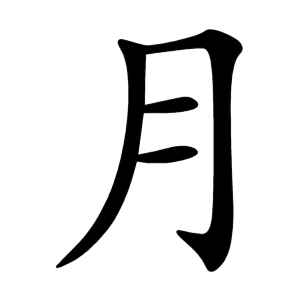
Radical 74 or radical moon (月部) meaning "moon" or "month" is one of the 34 Kangxi radicals composed of 4 strokes.

Radical 91 or radical slice (片部) meaning "slice" or "film" is one of the 34 Kangxi radicals composed of 4 strokes.

Radical 116 or radical cave (穴部) meaning "cave" is one of the 23 Kangxi radicals composed of 5 strokes.

Radical 119 or radical rice (米部) meaning "rice" is one of the 29 Kangxi radicals composed of 6 strokes.

Radical 120 or radical silk (糸部) meaning "silk" is one of the 29 Kangxi radicals composed of 6 strokes.

Radical 135 or radical tongue (舌部) meaning "tongue" is one of the 29 Kangxi radicals composed of 6 strokes.
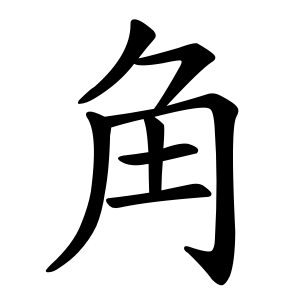
Radical 148 or radical horn (角部) meaning "horn" is one of the 20 Kangxi radicals composed of 7 strokes.
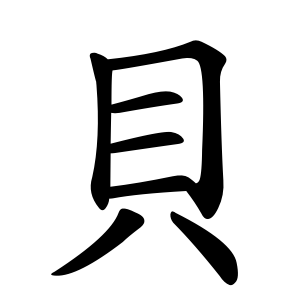
Radical 154 or radical shell (貝部) meaning "shell" is one of the 20 Kangxi radicals composed of 7 strokes.
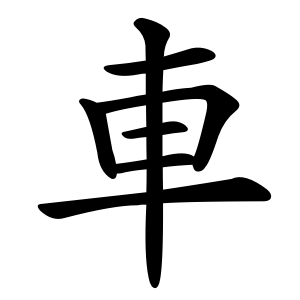
Radical 159 or radical cart (車部) meaning "cart" or "car" is one of the 20 Kangxi radicals composed of 7 strokes.

Radical 173 or radical rain (雨部) meaning "rain" is one of the 9 Kangxi radicals composed of 8 strokes. This radical character transforms into ⻗ when used as an upper component.
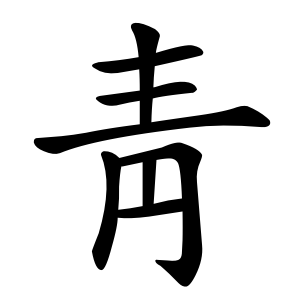
Radical 174 or radical blue (靑部/青部) meaning "blue" or "green" is one of the 9 Kangxi radicals composed of 8 strokes. It is also the character representing the color ao in Japanese, a general term covering both blue and green.
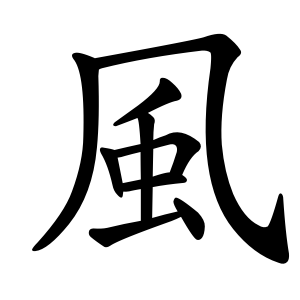
Radical 182 or radical wind (風部) meaning "wind" is one of the 11 Kangxi radicals composed of 9 strokes.

Radical 187 or radical horse (馬部) meaning "horse" is one of the 8 Kangxi radicals composed of 10 strokes.
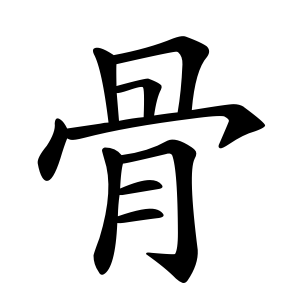
Radical 188 or radical bone (骨部) meaning "bone" is one of the 8 Kangxi radicals composed of 10 strokes.

Radical 195 or radical fish (魚部) meaning "fish" is one of the 6 Kangxi radicals composed of 11 strokes.





![[?]
in modern Traditional Chinese Regular Style CJKV Radical 130 (1).svg](http://upload.wikimedia.org/wikipedia/commons/thumb/7/7c/Regular_Style_CJKV_Radical_130_%281%29.svg/220px-Regular_Style_CJKV_Radical_130_%281%29.svg.png)



















